A dead Eastern coyote hung upside down above a bucket of dried blood in a rural Pennsylvania fire hall, its lips locked in a perpetual snarl.
Some men crouched beside it, while other adults twirled spaghetti with a fork, looking on from aluminum chairs. Children held canned sodas and stared.
“Thirty-eight pounds even,” the men said when the needle on the scale settled.
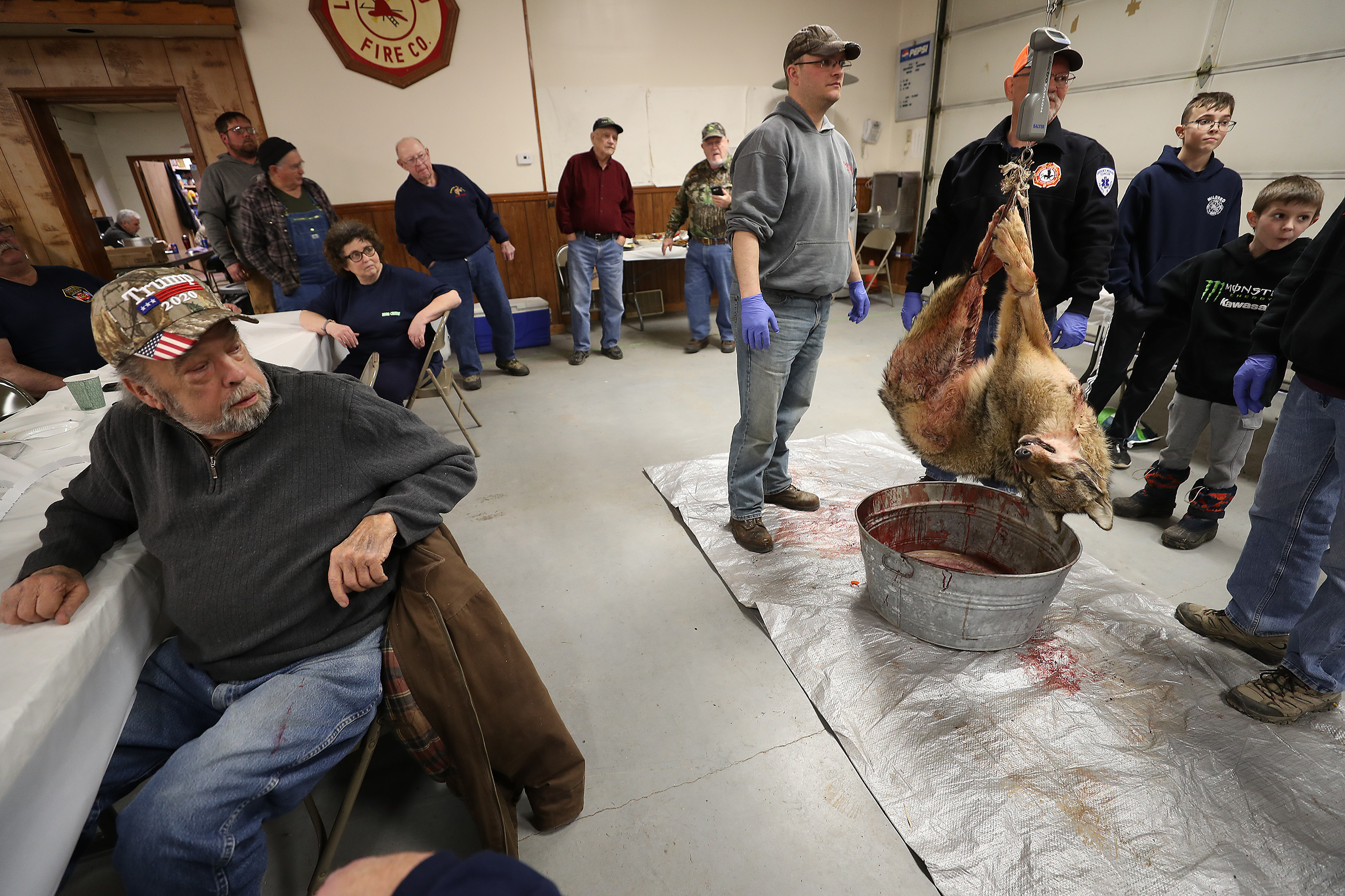
On this sunny February afternoon last year, 38 pounds wouldn’t take the crown at the 17th annual Sullivan County Coyote Hunt in LaPorte. The weekend-long contest saw 27 coyotes killed, the prize winner coming in at 44 pounds.
January and February are prime coyote-hunting months in Pennsylvania, when most of the state’s two dozen contests, like Sullivan County and the larger Mosquito Creek Coyote Hunt, in Clearfield County, take place. Although proponents say the coyote population needs to be controlled, many opponents of these killing contest-style hunts say they’re barbaric and disrupt the natural balance, taking out a “keystone predator” that controls rodent and pest populations and keeps feral cats, raccoons, and skunks in check as well.
“The coyote is by far the most persecuted predator in North America,” said Camilla H. Fox, founder of Project Coyote, a California-based nonprofit that has aimed to stop the contests. “There’s a half-million alone killed each year.”
The Pennsylvania Game Commission describes Eastern coyotes as “immigrants,” however, descendants of animals that moved in from the West and established themselves here in the 1940s and ’50s, and some consider them a distinct species, generally bigger than coyote cousins out west. The state was already home to native species that actively hunt rodents, including fishers, foxes, bobcats, weasels, and a host of predatory birds, said Aaron Facka, furbear specialist for the state commission.
“In short, if coyotes vanished from PA tomorrow, I would not expect a sudden population boom in rodent species,” Facka said.
Hunters and trappers take 30,000-plus per year and say they’re the only thing keeping coyote numbers in check.
“All the hunts in the state don’t put a dent in the population,” Dan Morrison, LaPorte’s fire chief, said at last year’s hunt. “They’re very smart.”
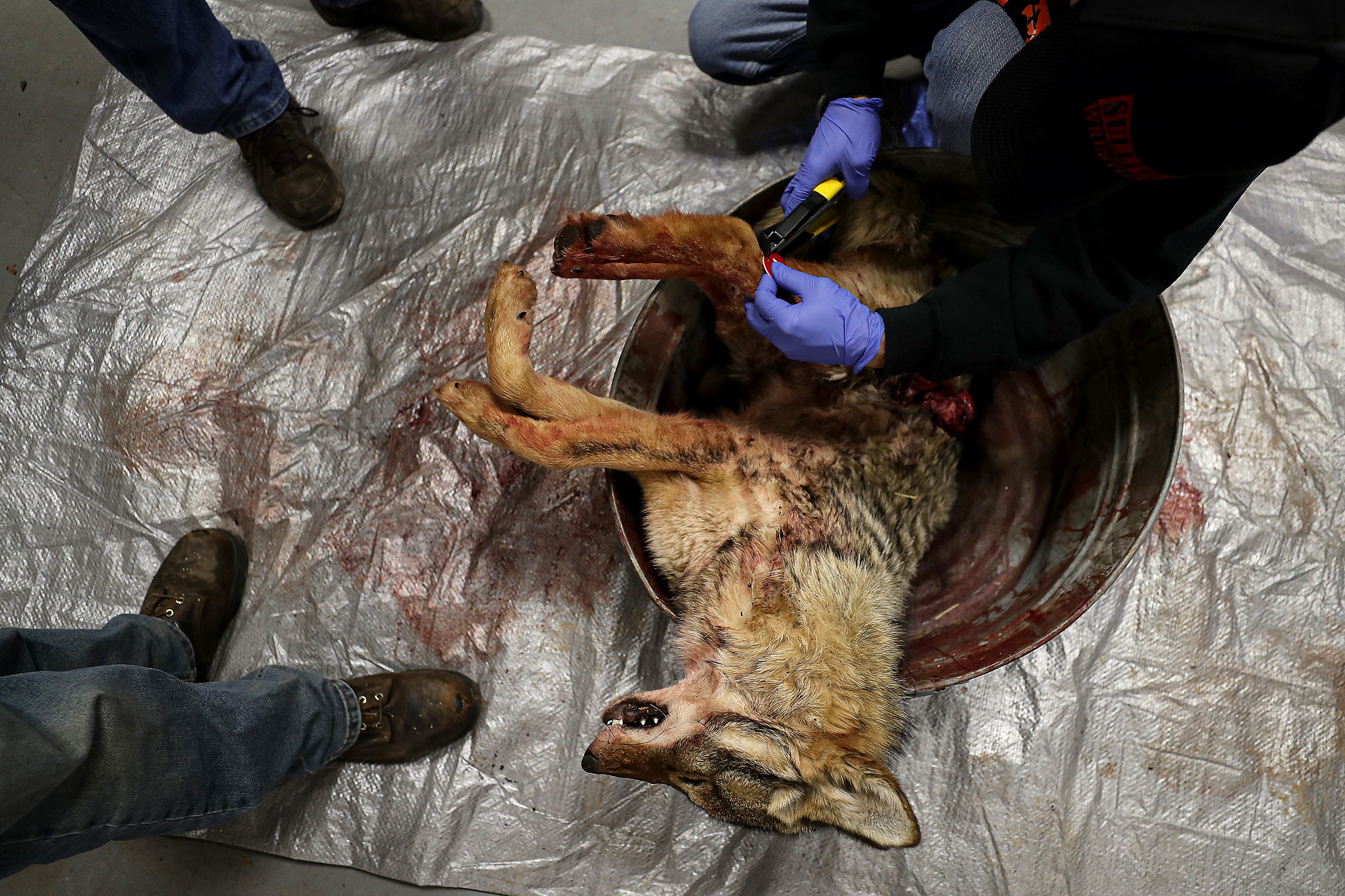
There could be as many as 100,000 coyotes in Pennsylvania, officials say, roaming mostly unseen through every county, including Philadelphia. Known as the “trickster” in Native American folklore, coyotes exist, both biologically and in our psyches, somewhere between the mythical wolf some revere and the beloved dogs snoring in our beds. No fewer than three people interviewed for this story uttered the same sentiment: “When the world ends, there will be cockroaches and coyotes.”
“They are survivors,” said Alan Probst, a Williamsport native who’s trapped coyotes all over North America. “They have adapted to all of their surroundings.”
Coyotes’ midnight howls and yips startle the unfamiliar who are asleep in tents far from the city, and every so often, they emerge to steal a toy poodle in the suburbs. They’re even at the Jersey Shore, denning under empty mansions in winter.
Human interactions are rare, but sometimes, usually when coyotes are sick, they bite people. A coyote that bit two men and a dog in York County last year had rabies.
While many hunters believe coyotes also kill a great number of whitetail deer, the state’s most prized game animal, Facka said that is “largely overstated.”
In rural areas of the state, farmers say coyotes sometimes prey on livestock, particularly smaller animals like sheep and goats. They can usually tell by how clean the kill is.
“They go for the neck and puncture an artery. Then they eviscerate them and take out the organs and take them back to their den for the pups. They actually move the intestines out of the way,” said James Sheeder, a Somerset County farmer who said he lost 50 lambs and sheep to coyotes and vultures years ago before he began trapping them and using guard dogs to keep them away. “It’s all very neat, compared to, say, a dog or a bear.”

Unlike the strict regulations on whitetail deer, trout, or turkey — which often include set seasons and hours, size and sex requirements, and bag limits — coyote hunting in Pennsylvania is limited only by how much free time hunters have. The season, according to the Pennsylvania Game Commission, is “24 hours a day, 7 days a week.”/
Hunters can kill as many as they want.
While hunters can shoot coyotes all year long, there is a season for trapping them that generally begins during the last weekend in October, the current season ending on Sunday. Trapping is often seen as a better method of population control, because an entire area can be blanketed. Trappers can sell the pelts, which are used as hood liners on winter coats.
Of the traps, Probst said: “They work for you while you’re sleeping.”
In Pennsylvania, Facka said the coyote population could not be controlled without human intervention.
“Coyotes are usually held down in population by wolves,” he said. “Wolves will drive them out of an area or kill them.”
The last known wolf in Pennsylvania was killed in the 1890s, but the Humane Society of the United States, which also opposes hunting contests, says coyotes have filled the role wolves once played in many states.
Coyotes can also have a biological response to hunting pressure that further confounds efforts to contain them. When coyotes are hunted and killed, survivors may respond to that population void, and the decreased competition for food, by having more pups.
“It can be complex, but when there are higher densities of coyotes, there can be a repression of reproduction,” Facka said.
It is one reason Project Coyote believes “unexploited coyote populations are self-regulating,” and indiscriminate killing is ineffective.
Fox said that, out west, some chase coyotes on snowmobiles and run them over. It’s called “coyote whackin,’” and the Wyoming state legislature declined to make that illegal.
In Pennsylvania, hunters are permitted to use tracking dogs, electronic calls that mimic injured prey, and, thanks to legislation approved by the state in July, infrared and thermal night-vision scopes to spot them easier in the darkness.
Shari Beatty, a Tioga County coyote hunter who spearheaded the state to get infrared and night vision approved, said those tools make a night hunt more efficient and humane. Beatty, who makes her own coyote calls, gave a presentation at the contest in LaPorte last year with a documentary crew in tow.
“It’s just another trick in your bag,” she said. “With that kind of equipment, you can see every detail of the animal and there’s no mistaking that shot.”
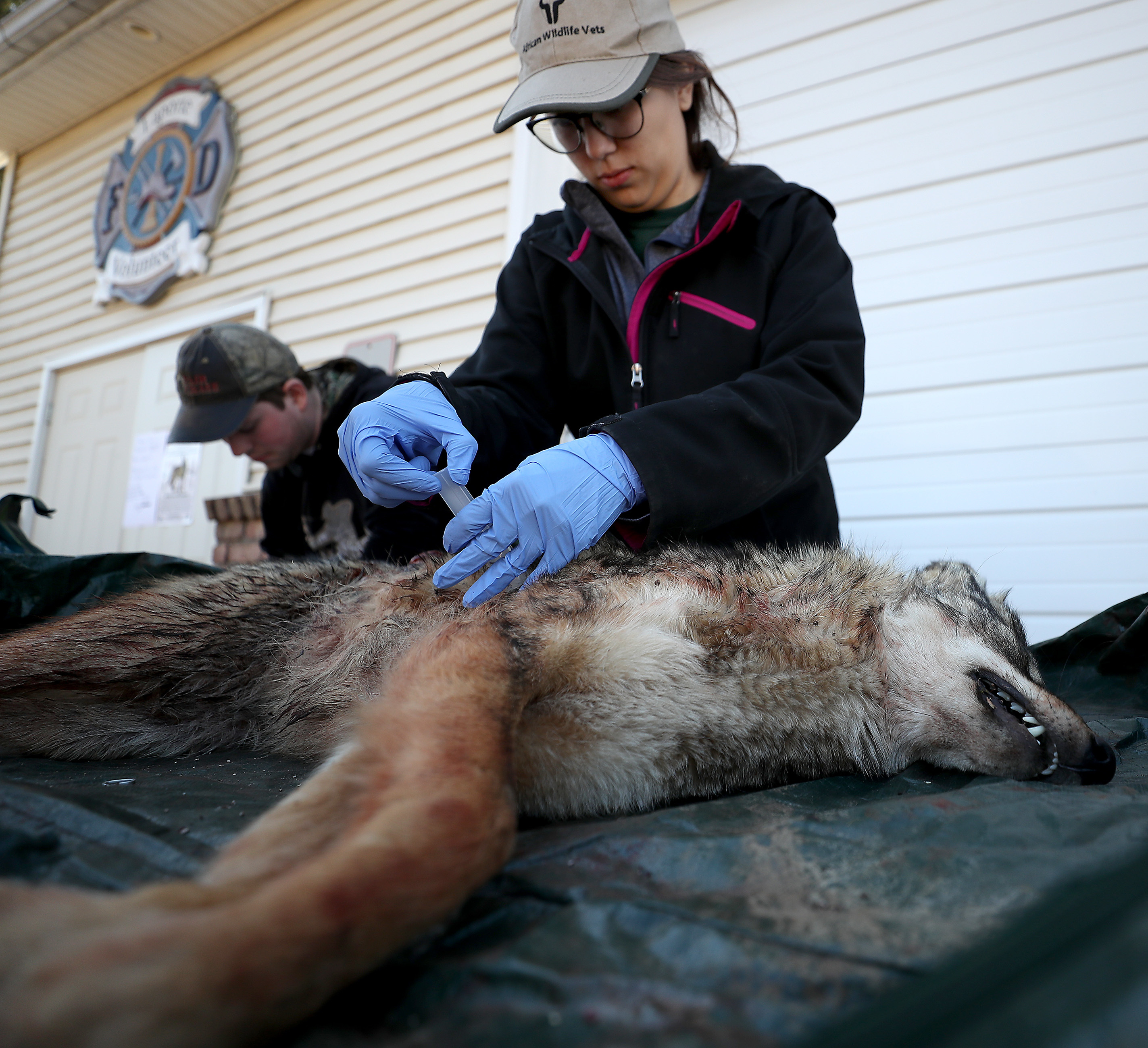
Biology students from Keystone College were also on hand at a table outside the firehouse taking blood and tissue samples from the dead coyotes for the U.S. Department of Agriculture to monitor the health of the populations. That also attracted a crowd, including Gary Adams and his granddaughter.
Adams, of Montoursville, Lycoming County, said Pennsylvania’s liberal coyote-hunting rules don’t translate to an easier time killing them.
“Pennsylvania is probably one of the hardest states in the country to hunt,” he said. “A lot of people hunt them, and they hunt them with dogs, and they’re even more wary cause they’re always being chased. They’re extremely intelligent. That’s what keeps me hooked.”
Fox said seven states have banned killing contests, including Massachusetts and Vermont in the Northeast. Unlike trapping, the coyotes killed during contests are shot with rifles and most, she said, are simply discarded, their pelts worthless.
“It’s hard to use a pelt with a big bullet hole in it,” she said.
At Laporte, last year, a few dead coyotes were sold between hunters for their pelts.
“I’ll give you $30 for it,” one man told a hunter.
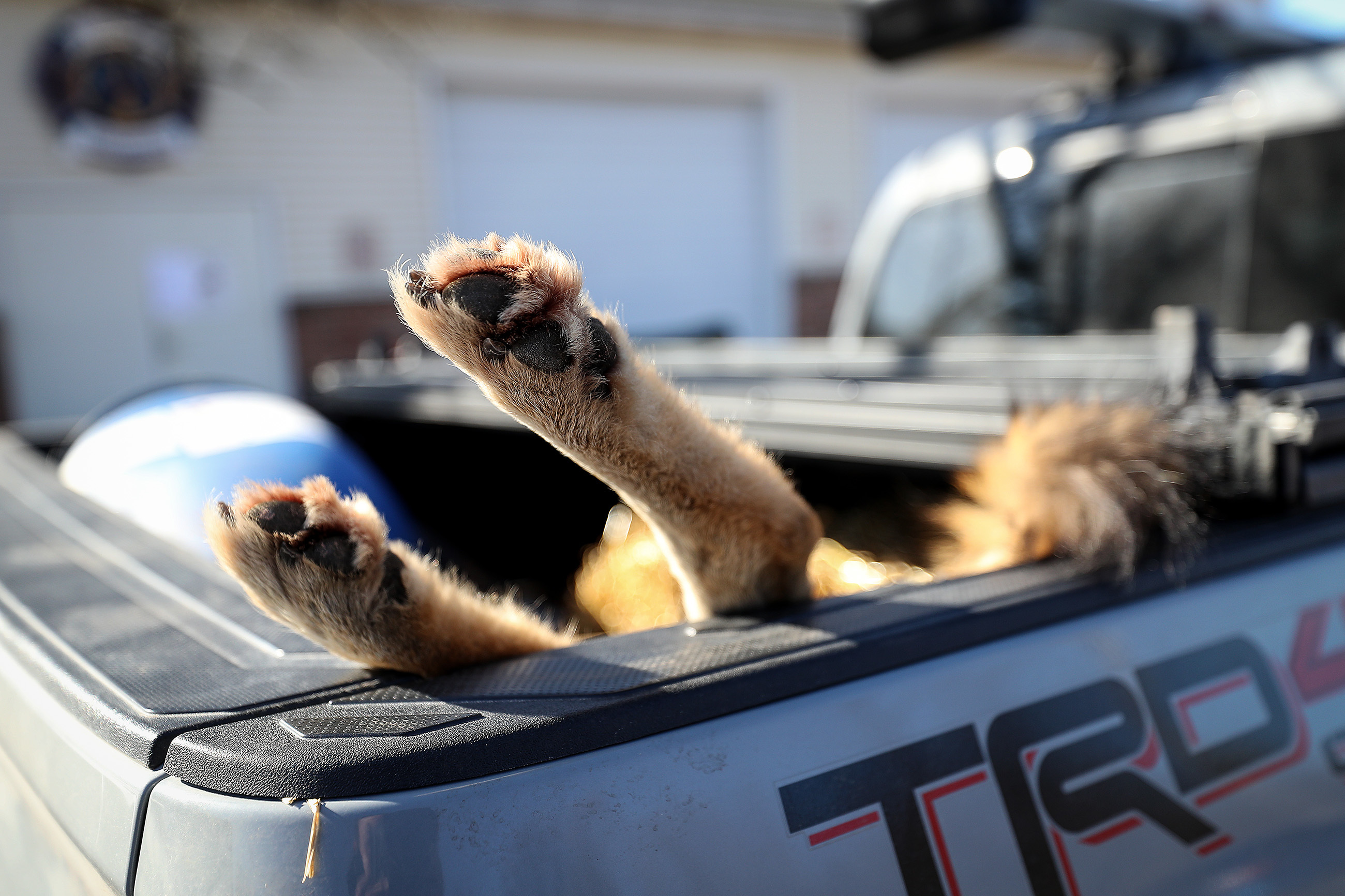
Mosquito Creek’s contest began Friday and ends with weigh-ins Sunday. The Sullivan County hunt is next weekend. Last year, 219 coyotes were killed at Mosquito Creek, the state’s largest hunt, but Facka said considering the number of hunters who enter, the contests are hardly a slaughter.
“You might have 4,000 entrants in some of these contests,” he said. “And if they’re killing 200, not thousands and thousands, that shows how real the challenge is.”
Probst, who hosts North American Trapper on the Sportsman Channel, said the ship has long since sailed on letting nature sort itself out. Everything must be managed, he said, whether it’s feral cats, cockroaches, or coyotes.
“A lot of people think they’re this mythical creature,” he said of coyotes, “and they’re not.”

This article was first published by The Philadelphia Inquirer on 20 February 2021. Lead Image: Paisley Baxter, left, watches as students from Keystone College draw blood samples from a coyote during the 17th annual Sullivan County Coyote Hunt in Laporte, PA on February 23, 2020. DAVID MAIALETTI / Staff Photographer.
What you can do
Support ‘Fighting for Wildlife’ by donating as little as $1 – It only takes a minute. Thank you.
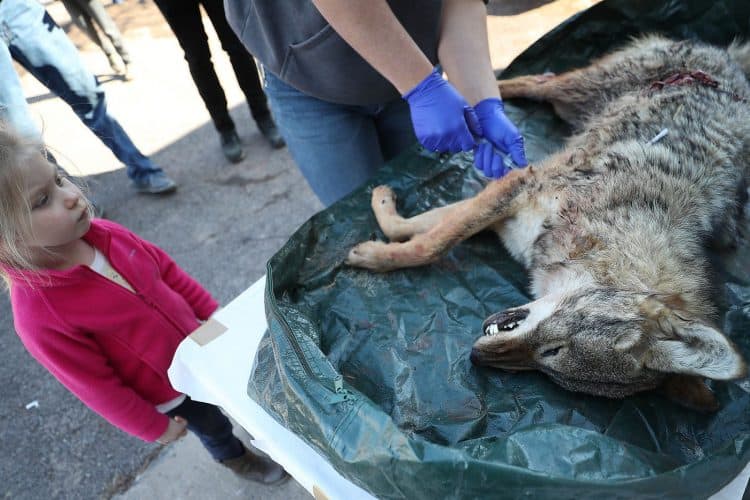
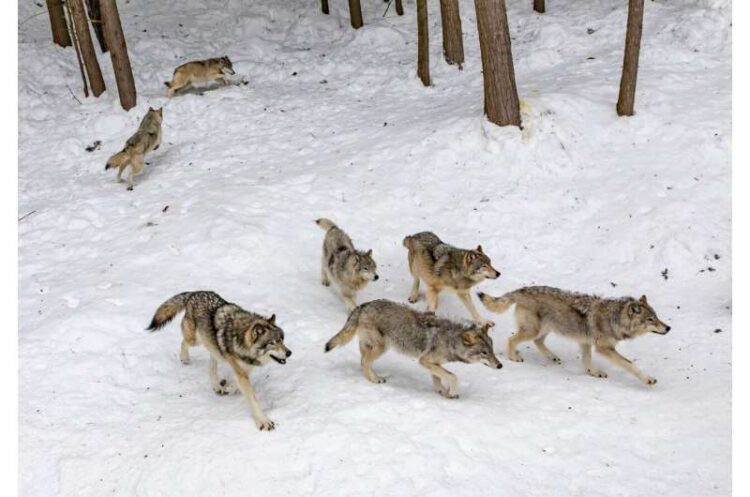

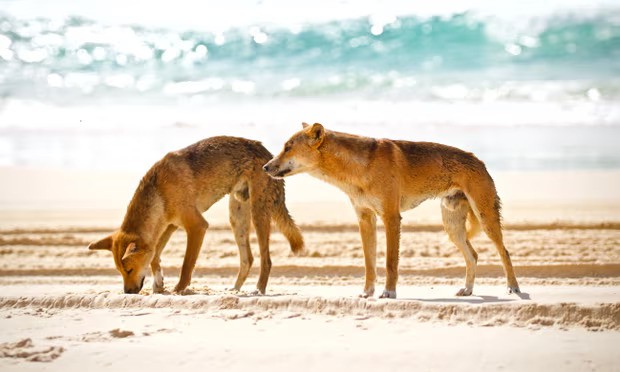
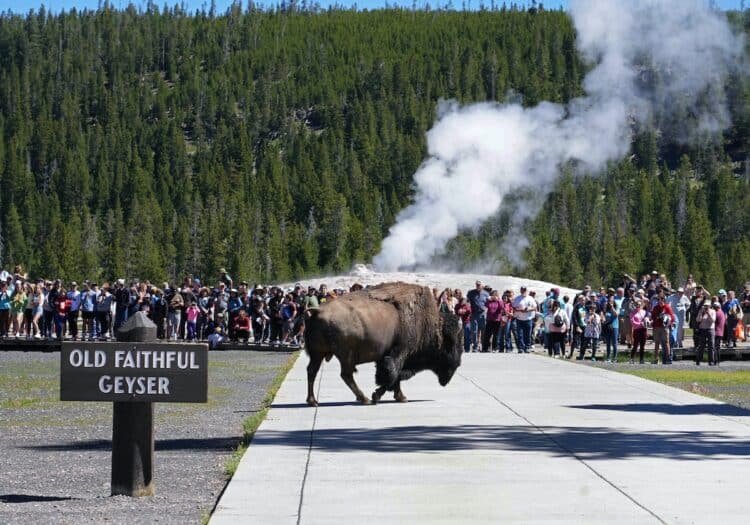
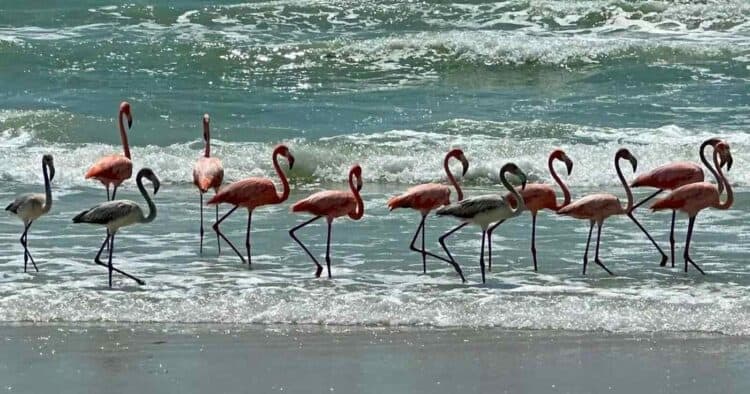

Leave a Reply